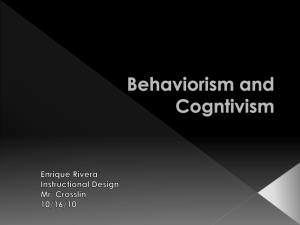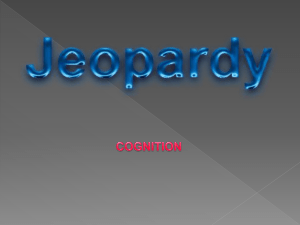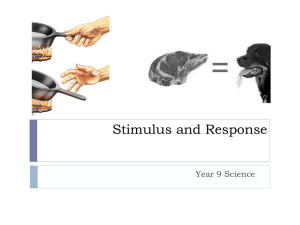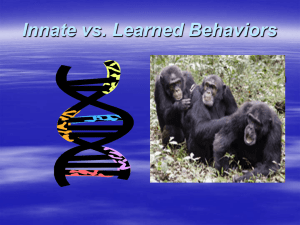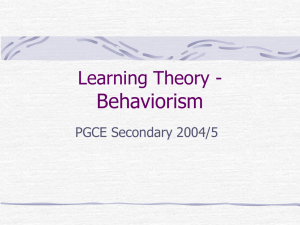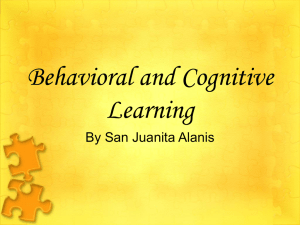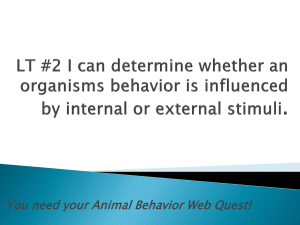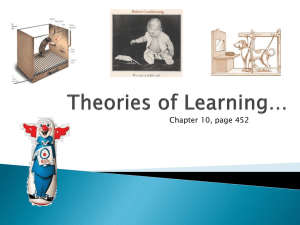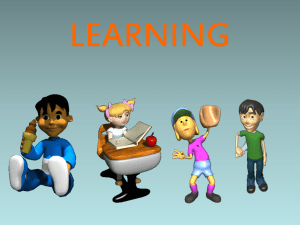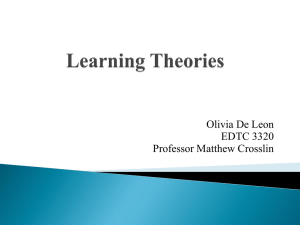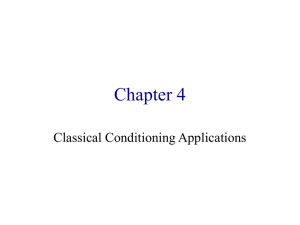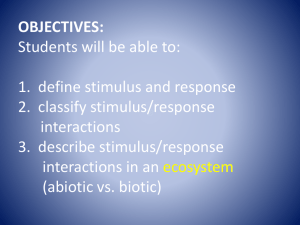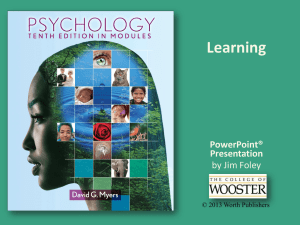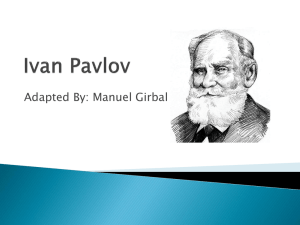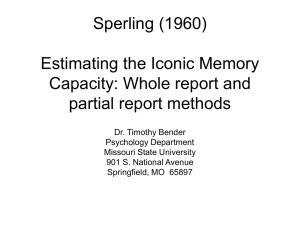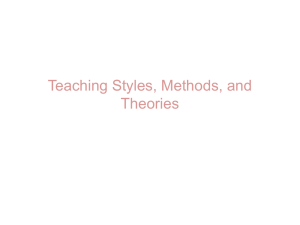EDT610 project 2 - InstructionalDesign-EDT
advertisement
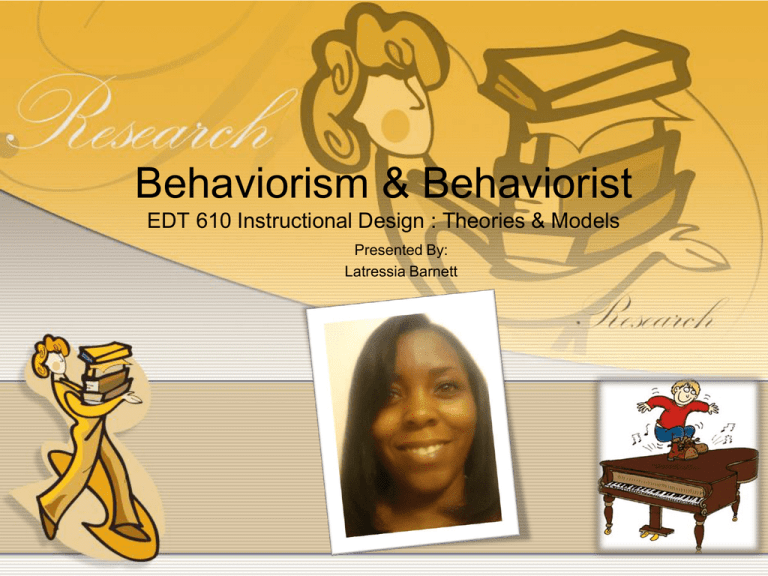
Behaviorism & Behaviorist EDT 610 Instructional Design : Theories & Models Presented By: Latressia Barnett Definition of BEHAVIOR According to Webster behavior is the actions or reactions of a person or animal in response to external or internal stimuli. Behaviorist Model BEHAVIORISM CONCEPT MAP The Behaviorists Originators and important contributors: • John B. Watson, • Ivan Pavlov, • B.F. Skinner, Ivan Pavlov CLICK HERE TO WATCH ME Ivan Pavlov was a Russian physiologist whose research on the physiology of digestion led to the development of the first experimental model of learning, Classical Conditioning. Most of his research was gathered studying salivating dogs. Pavlov studied reflexes, automatic behavior that is caused by a stimulus from the environment. Some reflexes, such as blinking your eyes when a puff of air comes in it, or the sucking of a baby when something is put in his/her mouth. This automatic behavior can be manipulated. This is called conditioning. In this conditioning process, a unconditional stimulus is given to a person. This stimulus causes a reflex on its own. When the unconditional stimulus is now given to the person together with a stimulus that does not cause a reflex on its own. Thus, a unconditional stimulus is given together with a conditional stimulus. Because the presence of the unconditional stimulus, the reflex is caused. This process of stimulus-response is repeated for a number of times. After a while, the unconditional stimulus is not offered any more. Only the conditional stimulus is offered. Because of the repeated association of the unconditional and the conditional stimulus, the conditional stimulus will now cause the reflex on its own. Classical conditioning is succeeded. Pavlov's theories where very influential, in particular in the field of child psychology John B. Watson John B. Watson further extended Pavlov’s work and applied it to human beings. In 1921, Watson studied Albert, an 11 month old infant child. The goal of the study was to condition Albert to become afraid of a white rat by pairing the white rat with a very loud, jarring noise (UCS). At first, Albert showed no sign of fear when he was presented with rats, but once the rat was repeatedly paired with the loud noise (UCS), Albert developed a fear of rats. It could be said that the loud noise (UCS) induced fear (UCR). The implications of Watson’s experiment suggested that classical conditioning could cause some phobias in humans. CLICK HERE TO WATCH ME B.F. Skinner B. F. Skinner’s entire system is based on operant conditioning. The organism is in the process of “operating” on the environment, which in ordinary terms means it is bouncing around its world, doing what it does. During this “operating,” the organism encounters a special kind of stimulus, called a reinforcing stimulus, or simply a reinforcer. This special stimulus has the effect of increasing the operant -- that is, the behavior occurring just before the reinforcer. This is operant conditioning: “the behavior is followed by a consequence, and the nature of the consequence modifies the organisms tendency to repeat the behavior in the future.” CLICK HERE TO WATCH ME VIDEOS TO VEIW Click on the picture to view the video Summary Behaviorism is a worldview that assumes a learner is essentially passive, responding to environmental stimuli. The learner starts off as a clean slate (i.e. tabula rasa) and behavior is shaped through positive reinforcement or negative reinforcement. Both positive reinforcement and negative reinforcement increase the probability that the antecedent behavior will happen again. In contrast, punishment (both positive and negative) decreases the likelihood that the antecedent behavior will happen again. Positive indicates the application of a stimulus; Negative indicates the withholding of a stimulus. Learning is therefore defined as a change in behavior in the learner. Lots of (early) behaviorist work was done with animals (e.g. Pavlov’s dogs) and generalized to humans. Behaviorism precedes the cognitivist worldview. It rejects structuralism and is an extension of Logical Positivism.
